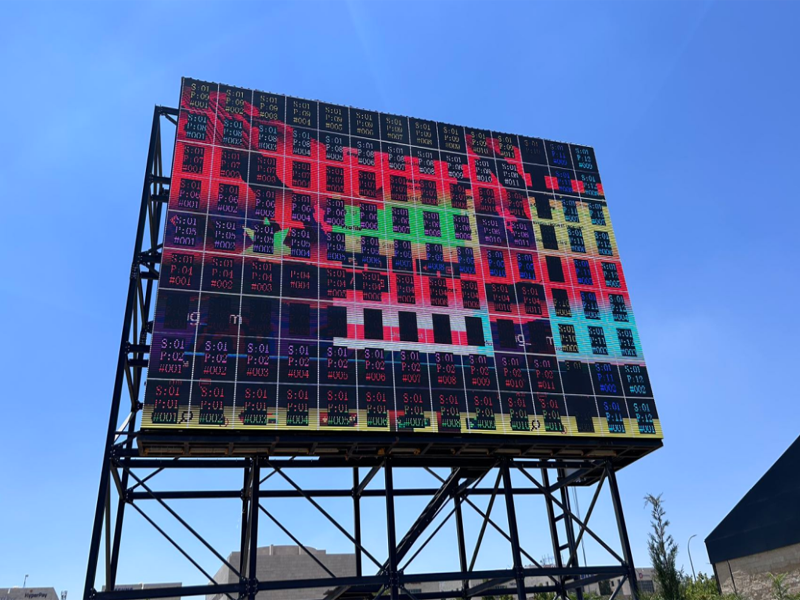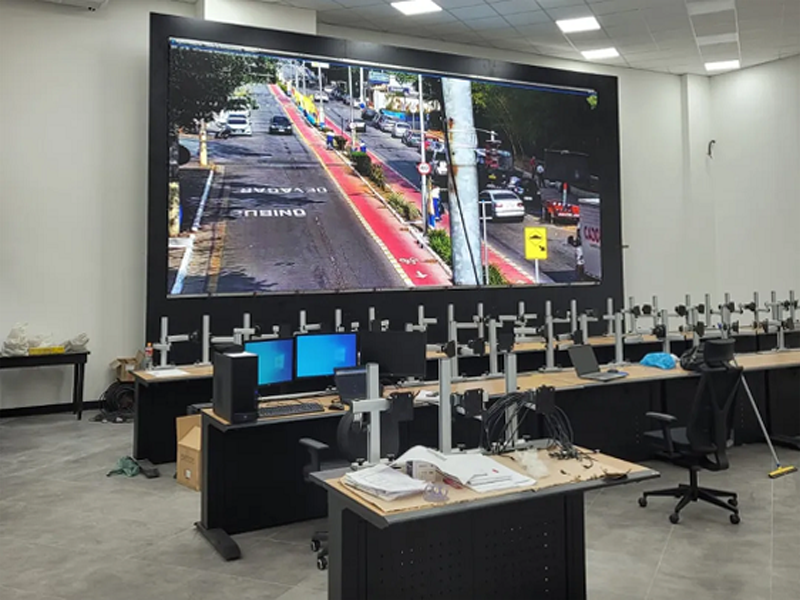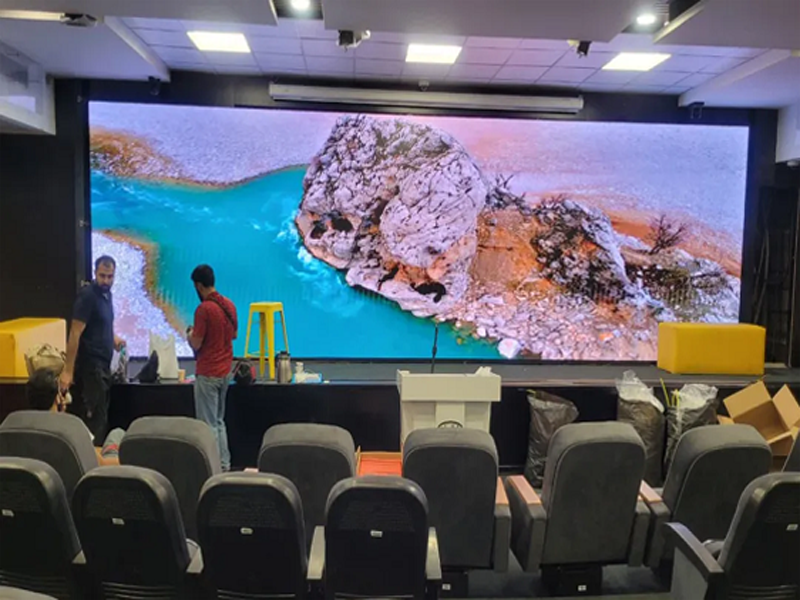For most of us, brightness is a term that we know more or less but cannot describe accurately with numbers, so we may not have a clear idea of how bright the LED wall needs to be.. Don’t worry, you will find the answers below.
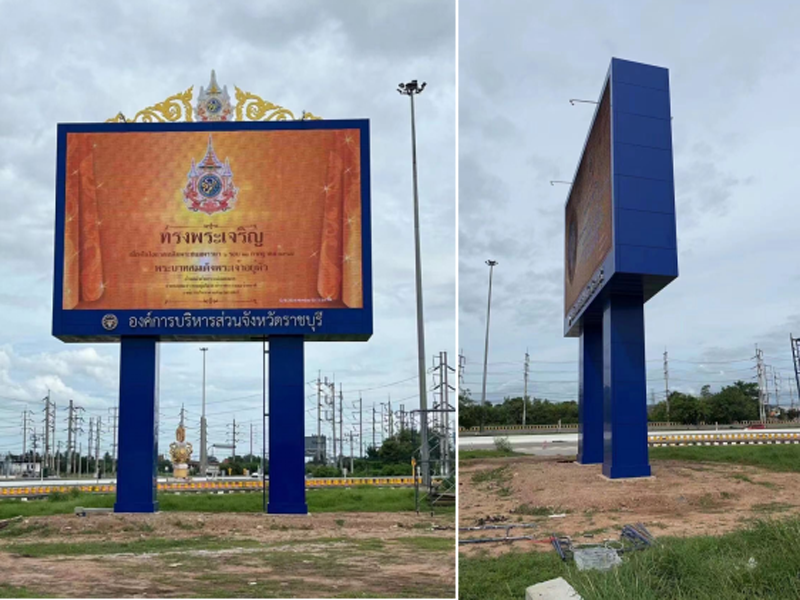
What is the brightness of an LED screen? Why it matters?
The brightness of an LED display is usually expressed by a numerical value in cd/㎡ or nit(s), which refers to the luminous intensity per square meter when the display is working normally. It’s easy to understand that the higher the value, the brighter the display.
Generally speaking, among a series of optical parameters such as brightness, contrast ratio, grayscale and color saturation, brightness plays an essential and decisive role, because only when the screen is under enough brightness can the other optical parameters be perceived. Assuming that the LED display is in an ultra-low brightness state, that is, almost completely black, it will not show sharp colors. At this time, it is meaningless to talk about color saturation and grayscale. So do the other optical parameters.

How much brightness does an LED screen need?
The suitable brightness of an LED screen depends on the application scenarios to a great extent. In general, we recommend that:
| Application scenario | Applicable brightness |
| Indoor | <1,000nits |
| Semi-outdoor | 3,000-5,000nits |
| Outdoors | 5,000nits-10,000nits |
Of course, due to the different specific usage and installation locations in practical projects, the applied brightness of an LED screen may vary accordingly. For different usage, we take indoor applications as example, the suitable brightness is show as below.
Indoor usage
Applicable brightness
| Indoor usage | Applicable brightness |
| Document presentation | 200-300nits |
| Video playback | 400-600nits |
| Advertising | 600-1,000nits |
In regards to different installation locations, we take outdoor LED walls for instance. If the LED wall is facing east and west, i.e. facing the sun, we need at least 7,000nits of brightness as the sunlight hits on the screen directly; if the LED wall is facing south and north, the minimum brightness can be lower down to 6,000nits.
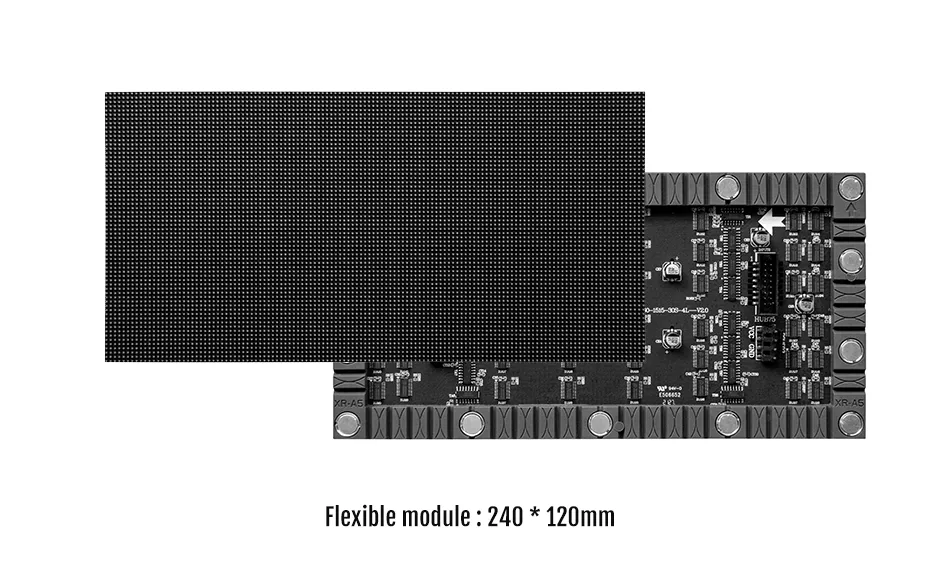
So here comes a problem, what if an LED screen exceeds or falls short of the optimal brightness range? It will be similar to the situation when you are dimming your mobile phone to the darkest under midday sunlight. You cannot see clearly. Thus your eyes feel tired. On the contrary, adjusting your mobile screen to its full brightness in midnight will not only waste electricity but also harm your eyes.
Now you understand why digital out-of-home requires high-brightness LED displays. Brighter screen can be more enticing, but excessive brightness will cause discomfort and waste.
To sum up, the appropriate brightness of the LED display should be determined according to the actual installation environment and application conditions.




